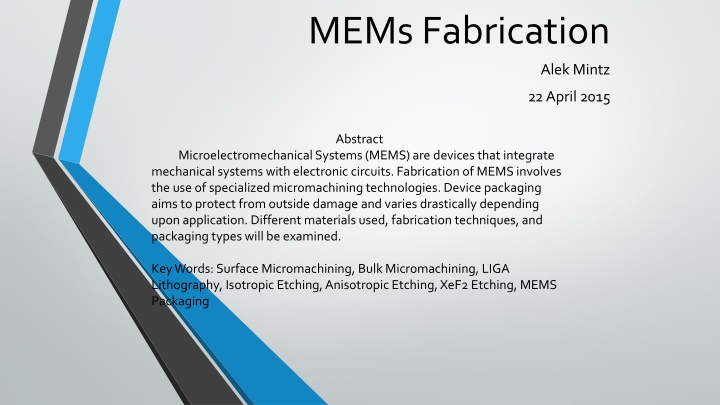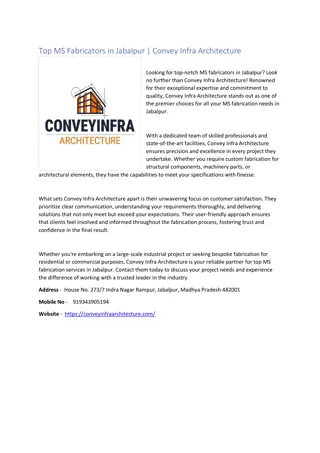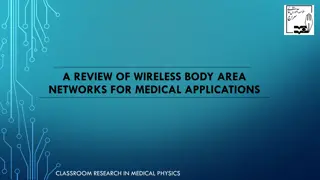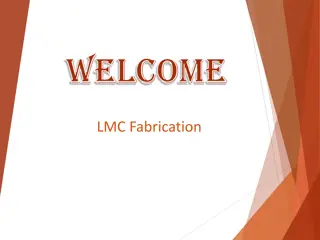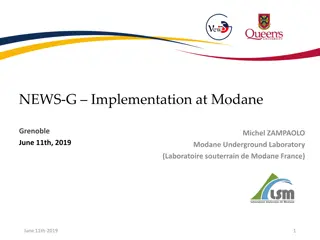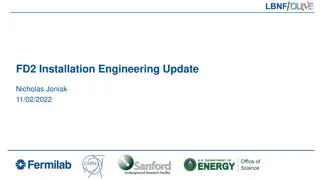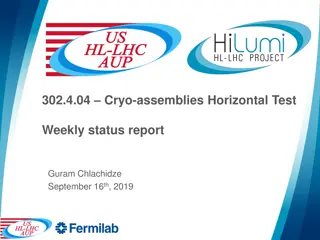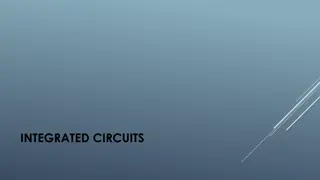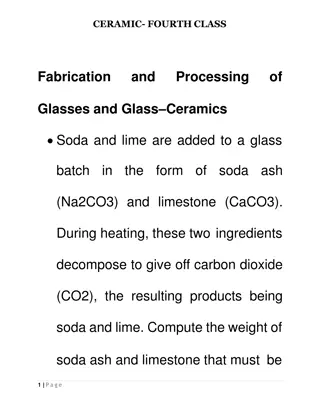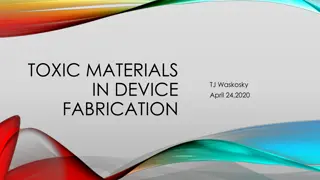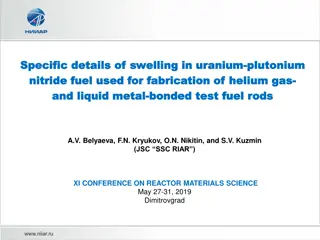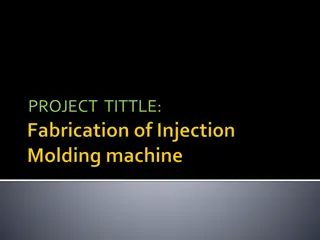MEMs Fabrication Techniques and Applications
MEMs (Microelectromechanical Systems) are small devices that combine mechanical and electronic components to create sensors, actuators, and more. This abstract provides insights into the fabrication of MEMs using specialized micromachining technologies, different materials, manufacturing techniques like bulk and surface micromachining, etching methods, wafer bonding, and device packaging. Learn about the advantages and disadvantages of bulk and surface micromachining, as well as the diverse materials and manufacturing technologies involved in MEMs production. Discover how MEMs integration has transformed the semiconductor industry, enabling the development of innovative electronic circuits integrated with mechanical systems.
Download Presentation

Please find below an Image/Link to download the presentation.
The content on the website is provided AS IS for your information and personal use only. It may not be sold, licensed, or shared on other websites without obtaining consent from the author.If you encounter any issues during the download, it is possible that the publisher has removed the file from their server.
You are allowed to download the files provided on this website for personal or commercial use, subject to the condition that they are used lawfully. All files are the property of their respective owners.
The content on the website is provided AS IS for your information and personal use only. It may not be sold, licensed, or shared on other websites without obtaining consent from the author.
E N D
Presentation Transcript
MEMs Fabrication Alek Mintz 22 April 2015 Abstract mechanical systems with electronic circuits. Fabrication of MEMS involves the use of specialized micromachining technologies. Device packaging aims to protect from outside damage and varies drastically depending upon application. Different materials used, fabrication techniques, and packaging types will be examined. Microelectromechanical Systems (MEMS) are devices that integrate Key Words: Surface Micromachining, Bulk Micromachining, LIGA Lithography, Isotropic Etching, Anisotropic Etching, XeF2 Etching, MEMS Packaging
Outline Materials Bulk and Surface Micromachining Etching and Deposition Techniques Other Manufacturing Technologies Wafer Bonding Device Packaging
What are MEMS? Small devices that use electrical and mechanical elements Common uses include sensors and actuators Made using modified semiconductor fabrication technology
Materials Silicon Polymers Metals Ceramics
Manufacturing Technologies Bulk Micromachining Surface Micromachining
Bulk Micromachining Oldest technology Involves selective removal of substrate material Can be done through physical or chemical means Etching requires a masking material
Bulk Micromachining Advantages/Disadvantages Not easily integrated with microelectronics Part complexity must be relatively simple Part size is limited to being larger Can be done much faster Can make high aspect ratio parts Cheaper
Surface Micromachining Newer than Bulk Micromachining Uses single sided wafer processing Involves use of sacrificial and structural layers Provides more precise dimensional control Involves use of sacrificial and structural layers
Surface Micromachining Advantages/Disadvantages Possible to integrate mechanical and electrical components on same substrate Can create structures that Bulk Micromachining cannot Cheaper glass or plastic substrates can be used Mechanical properties of most thin- films are usually unknown and must be measured Reproducibility of mechanical properties can be difficult More expensive
Deposition Techniques Sputtering Evaporation Chemical Vapor Deposition LPCVD, PECVD Thermal Oxidation
Isotropic Etching Etching does not depend on crystal orientation Etch rate of some etching solutions are dependent on dopant concentrations Solution is stirred to keep homogeneity and allow for optimal etching
Anisotropic Etching Etch rates are dependent upon crystal orientation Used more widely for Silicon micromachining Allows for different etching shapes and better dimensional control
Etching Wet and dry etching Uniformity of etching can vary across substrate Timed etches difficult to control Dopant and Electrochemical etch stops are used to control etch depth
Plasma Etching Gas usually contains molecules rich in Cl or F CCl4, CH3F Plasma ashing
Deep Reactive Ion Etching (DRIE) Relatively new technology Enables very high aspect ratio etches Uses high density plasma to alternately etch and deposit etch resistant polymer on sidewalls
Lithographie Galvanoformung Adformung (LIGA) Popular high aspect ratio micromachining technology Primarily non-Silicon basted and requires use of x-ray radiation Special mask and x-ray radiation makes process expensive
Hot Embossing Mold insert is made with inverse pattern Substrate and polymer are heated and force is applied to create structure Process can replicate complicated, deep features Part costs very low compared to other technologies
XeF2 Etching Chemical etchant High Silicon selectivity Stiction-free release
Laser Micromachining Lasers generate intense energy quickly Focusing optics used to melt or vaporize material Can produce very small features
Wafer Bonding Silicon and Glass wafers can be bonded together to create systems using several parts Bond using high temperatures Bond using much lower temperature and large voltage
Eutectic Bonding Bonding of Silicon substrate to another using intermediary level of gold
Packaging MEM die is extremely fragile Must offer protection, connections to device, heat removal capabilities Goal is to minimize size, cost, mass, complexity
Packaging Design Thermal shock, vibration, acceleration, particles, radiation, electric + magnetic fields Thermal expansion of packaging must be equal or slightly greater than that of Silicon to prevent cracking
Packaging Types Metal Ceramic Plastic Thin-Film Multilayer
Conclusion MEMS fabrication uses highly specialized technology Devices are made using Bulk or Surface micromachining or a combination Isotropic and Anisotropic etching Popular etching and microstructure fabrication technologies Wafer Bonding Packaging types and considerations
References "Fabricating MEMS and Nanotechnology." MEMS and Nanotechnology Exchange. Web. 18 Apr. 2015. <https://www.mems-exchange.org/MEMS/fabrication.html>. Gerke, R. "MEMS Packaging."University of Pennsylvania. Web. 18 Apr. 2015. <http://www.seas.upenn.edu/~meam550/PackagingJPL.pdf>. "Introduction to Microelectromechanical Systems (MEMS)."Brigham Young University. Web. 18 Apr. 2015. <https://compliantmechanisms.byu.edu/content/introduction-microelectromechanical- systems-mems>.
Key Concepts Advantages and Disadvantages of Bulk and Surface Micromachining Anisotropic and Isotropic etching XeF2 etching Wafer Bonding Device Packaging considerations
